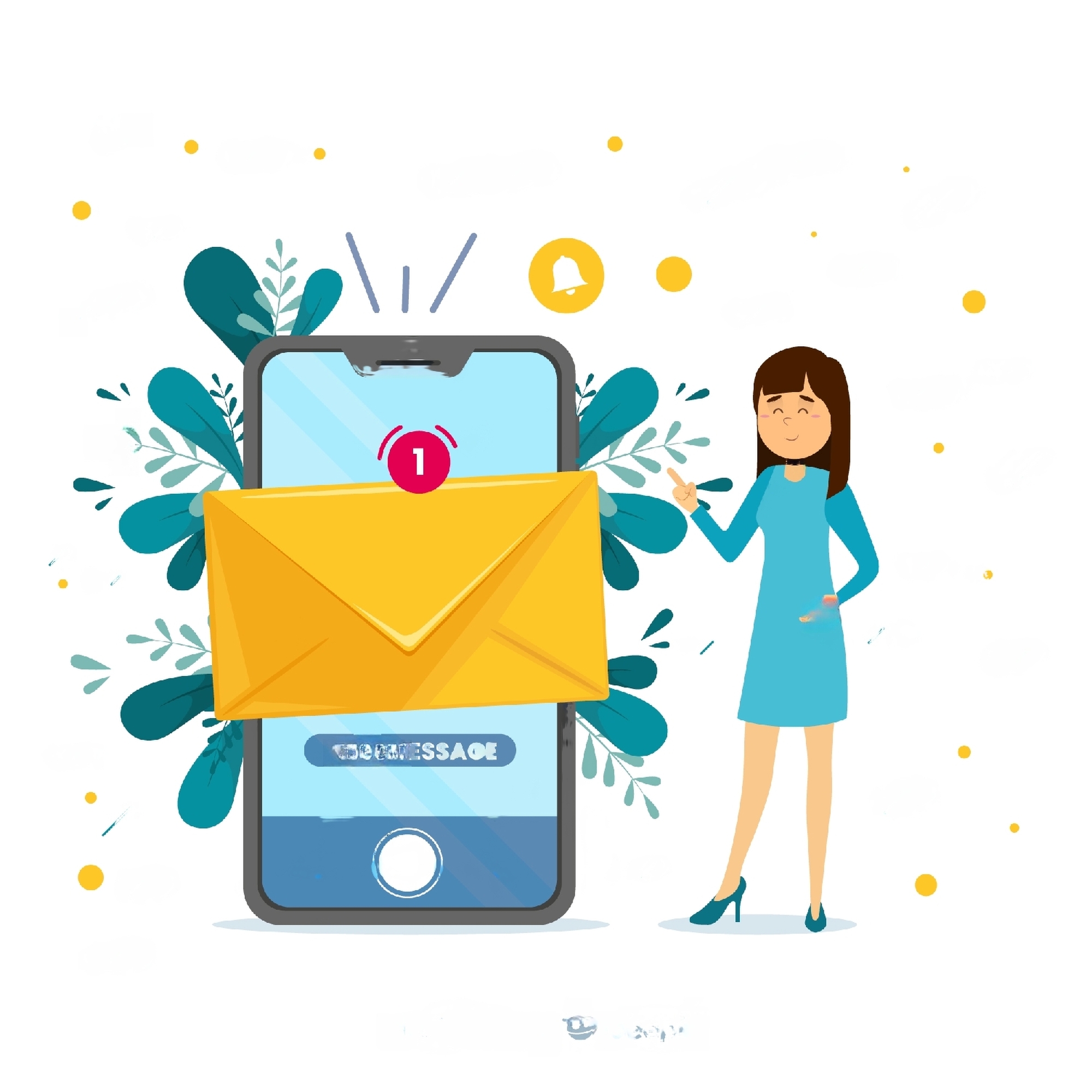SMS Local: Elevating Engagement with Custom SMS Landing Pages and APIs
 SMS Local
SMS Local
Introduction to SMS Landing APIs
SMS (short message service) marketing has become an extremely popular and effective way for businesses to engage with customers. An SMS landing page, also called an SMS landing API, allows you to create customized pages that mobile users are sent to when they click on a link in a text message.
The SMS landing page can contain any information you want to convey or actions you want the user to take. For example, it could contain a coupon code, a sign-up form, a questionnaire, or any other call-to-action. The benefit of using a landing page rather than just sending a text with information is that you can track views and interactions with the landing page to gauge engagement.
In this article, we’ll dig into what exactly SMS landing APIs are, their benefits, and tips for creating effective SMS landing pages for your business.
What is an SMS Landing Page/API?
An SMS landing page, also known as an SMS landing API, is a customized page that you can send SMS message recipients to by including a clickable link in your text message. When the recipient clicks the link in the SMS message, they will be redirected to the landing page in their mobile web browser rather than just seeing plain text.
The landing page is hosted on your company’s website and can contain any elements you want - images, videos, coupons, calls-to-action, etc. The page is optimized for mobile so that it renders properly on smartphones. You have full control over the design and content of the landing page.
The API part refers to the software interface that allows your SMS platform to communicate with your website and landing pages. When a recipient clicks the link in the text message, the API receives that request and redirects the user to the correct landing page on your site. The API manages all of the behind-the-scenes work to direct traffic to the right place.
Benefits of Using an SMS Landing Page
There are many advantages to using customized SMS landing pages rather than just sending plain text messages:
Track engagement - You can see how many people clicked on the link in the SMS message and viewed the landing page. This helps gauge engagement with your campaign.
Mobile optimization - The landing page is designed specifically for mobile devices, providing an optimal experience for smartphone users.
Provide more information - You have ample space to communicate detailed information through images, videos, bullet points, etc. rather than being limited to 160 plain text characters.
Call-to-action - The landing page can contain buttons for specific actions like “Sign Up Now” or “Get Coupon.” This facilitates the action you want the recipient to take.
Branding - You can use your brand colors, logo, images, etc. to create landing pages that reinforce your brand and messaging.
Lead generation - Landing pages can contain forms for capturing contact information that allows you to generate and follow up on leads.
Analytics - Detailed analytics can show you things like bounce rates, conversions, behavior flow, and which messages drove the most traffic to landing pages.
A/B testing - You can test different variants of landing pages to optimize performance over time.
Retargeting - If the landing page contains pixels, you can retarget SMS recipients with additional messages or ads across channels.
Overall, SMS landing pages provide much more flexibility, customization, and measurement capability compared to standard text message marketing.
Tips for Creating Effective SMS Landing Pages
When designing and building your SMS landing pages, keep these tips in mind:
Make it mobile-friendly - Use legible fonts, avoid small elements, ensure clickable buttons are large enough for fingers, and keep page lengths short by avoiding scrolling since mobile screens are small.
Use scannable formatting - Break up sections with headlines and bullets. Mobile users want to quickly scan the page and grasp key information.
Personalize it - Use merge tags to dynamically populate the recipient’s first name and leverage any other data points you have to make the page feel customized.
Be concise - Say what you need to say succinctly with short sentences and paragraphs. Don’t overload the page with a lengthy sales pitch or oversell your offer.
Highlight benefits - Clearly articulate the key benefits of your offer rather than just features. Explain why they should care.
Use images - Pictures are engaging on mobile and convey information quickly. Ensure you use compressed, optimized images to avoid a slow load time.
Include a strong CTA - The ultimate goal of your landing page is to get the visitor to take your desired action. Make your call-to-action button or link obvious.
Keep forms short - If you include a form, only ask for essential information. Too many fields will cause drop-off. You can request more info later on.
Provide value - Whether it’s a coupon code, exclusive content, early access to sales, etc., offer something of value in exchange for their SMS opt-in or engagement.
Be trustworthy - Identify your brand, provide customer contact info, and reassure visitors that their data is safe to establish trust.
Match branding - Use colors, fonts, logos, and messaging that align closely with your overall brand identity.
Install analytics - Use tools like Google Analytics to track performance and optimize your landing pages over time.
Limit redirects - Try to take the visitor directly to the landing page rather than chaining together multiple redirects.
Use a dedicated URL - Rather than routing all traffic to your homepage, use a dedicated URL for each SMS campaign’s landing page.
Best Practices for Launching an SMS Landing Page Campaign
Once you’ve built effective SMS landing pages, make sure you also follow best practices when launching and managing your campaigns:
Test rigorously first - Thoroughly test links, tracking, load speed, and form submission before officially launching.
Send initial announcement - Let current SMS subscribers know to expect interactive messages with landing pages.
Schedule messages wisely - Avoid sending too late at night or too early in the morning. Know when your customers are most engaged.
Limit message frequency - Only send SMS landing page links periodically, not with every single message.
Personalize timing - Use customer data to determine optimal timing for different segments. For example, send lunch coupons around noon.
Integrate with CRM - Sync data between your SMS tool, landing page forms, and CRM to track lead origin and activity history.
Make link obvious - Use text like “Click here” or “Link in bio” so customers realize the message has a clickable link.
Provide value first - Send valuable content or special offers through text initially before graduating recipients to a landing page experience.
Make it work without clicking - The CTA should be supplementary. Recipients need to still get core info from the SMS itself without having to click through.
Follow up manually - If someone engages with a landing page but doesn’t complete the desired action, follow up personally to guide them.
Optimize based on metrics - Use A/B testing and analytics to guide decisions about refinements to maximize conversions over time.
Keep messaging permission-based - Only send marketing messages and redirect to landing pages for contacts who have actively opted in.
Following permission-based messaging, providing value, closely tracking performance, and optimizing based on data analytics will lead to the best results from the SMS landing page campaign.
Top SMS Landing Page Tools and Templates
Rather than building SMS landing pages completely from scratch, you can use templates and tools to simplify the process:
Unbounce – Provides an extensive library of professionally designed landing page templates that you can customize for your brand and needs.
Leadpages – Another landing page builder with a variety of templates and easy customization for creating SMS landing pages.
Zipwhip – A dedicated tool for building effective SMS landing pages with their drag-and-drop editor and mobile optimization.
Yotpo SMS Marketing – Offers built-in templates and integrations to easily deploy and track SMS campaigns with landing pages.
Oberlo - Their landing page builder has a template library and the tool integrates with SMS apps to track clicks.
Pagewiz - Builds optimized, high-converting SMS landing pages using AI rather than templates. Fully customizable.
Landingi – Provides templates, built-in SMS connectivity, and features to capture leads from landing pages.
Instapage – This lets you create high-converting landing pages and offers a range of templates for different use cases.
Leadpages and Unbounce offer the biggest libraries of templates covering different designs, industries, and campaign types. Yotpo, Zipwhip, and Landingi are purpose-built more for SMS landing pages while also including templates. The rest provide powerful customized landing page builders with the flexibility to design SMS landing pages from scratch.
Most SMS marketing platforms like Twilio also allow you to host landing pages on your website that you can link to in text messages. This route gives you total creative control and branding consistency.
Key Takeaways and Next Steps
SMS landing pages provide much more customization, branding, analytics, and interactivity compared to plain text messages.
Well-designed mobile-optimized landing pages can capture more lead information, drive conversions, and track campaign performance.
Follow best practices for template design and launch execution to maximize results.
Leverage pre-built templates or purpose-built tools to ease and accelerate landing page creation.
Focus on providing value first before graduating contacts to landing page experiences.
For the next steps, do thorough research on your customer demographics and behaviors to determine the optimal offers and experiences to showcase on your SMS landing pages. Brainstorm creative ways to provide value that aligns with your brand promise.
Develop a process for designing, testing, iterating, and analyzing your landing pages to continuously optimize performance. Map out a customer journey to transition new SMS contacts from basic text messages to richer landing page engagements over time, after trust has been established.
Lastly, invest in a powerful SMS marketing platform that includes landing page capabilities or integrates with your website and CRM. The right technology stack will make executing and automating sophisticated SMS campaigns at scale much easier.
With strategic SMS landing pages and the tools to implement them effectively, you can take your mobile marketing to the next level and significantly boost customer engagement.
Subscribe to my newsletter
Read articles from SMS Local directly inside your inbox. Subscribe to the newsletter, and don't miss out.
Written by

SMS Local
SMS Local
Easily connect with your audience through DLT SMS, OTPs, API SMS, and Quick SMS—no DLT registration required. Get started with ₹60 free credit today and grow your business smoothly!